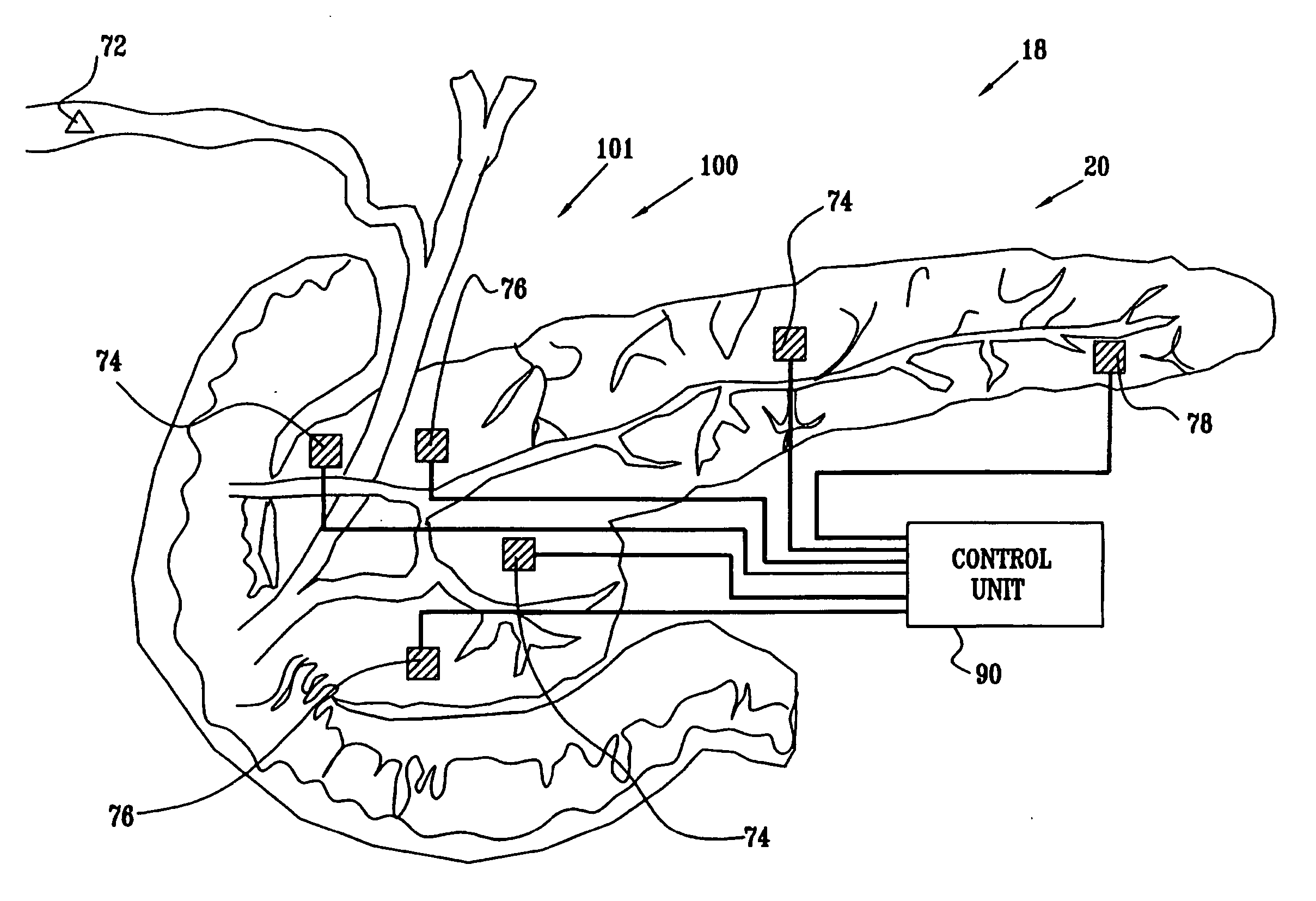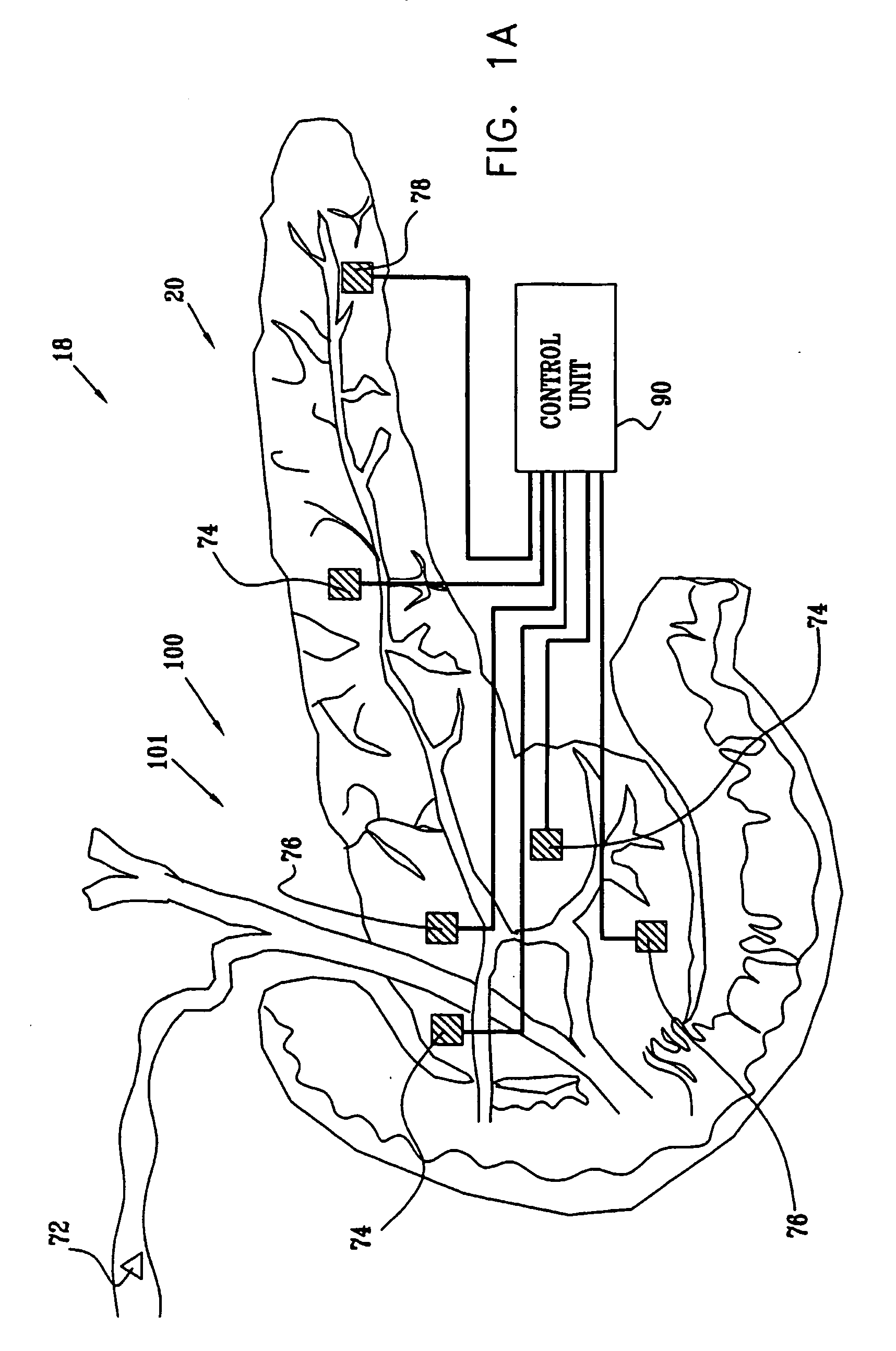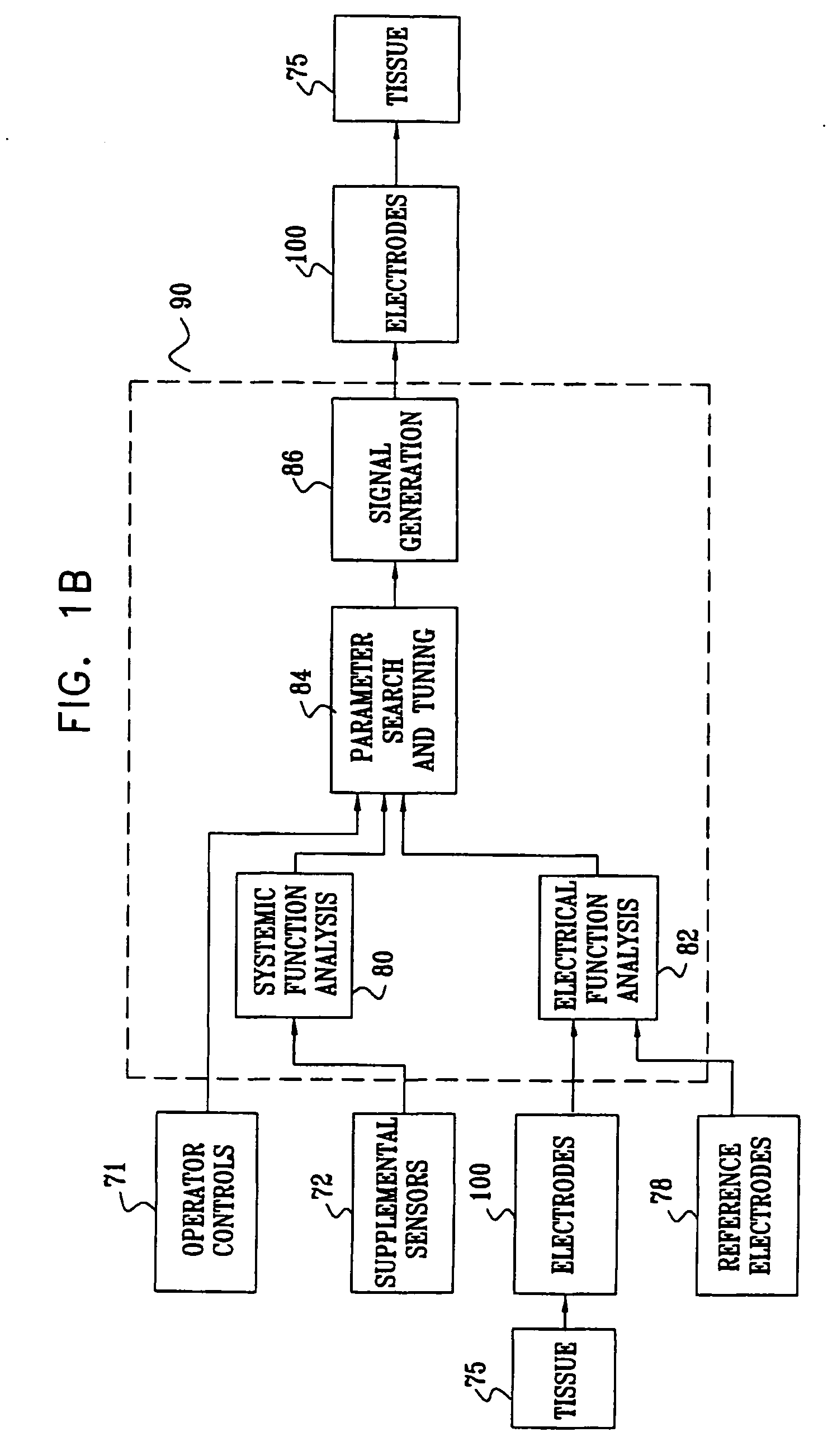Sensing of pancreatic electrical activity
a technology of electrical activity and pancreas, applied in the field of electric sensing, can solve the problems of inability to clinically apply implantable enzymatic sensors, lack of reliable, long-term, wearable, or implantable blood glucose sensors, and few clinical studies
- Summary
- Abstract
- Description
- Claims
- Application Information
AI Technical Summary
Benefits of technology
Problems solved by technology
Method used
Image
Examples
Embodiment Construction
[0272]FIG. 1A is a schematic illustration of apparatus 18, which senses electrical activity of a pancreas 20 of a patient, in accordance with a preferred embodiment of the present invention. Apparatus 18 preferably comprises an implantable or external control unit 90, which is electrically coupled to electrodes 100 and / or supplemental sensors 72, which sense, for example, blood sugar, SvO2, pH, pCO2, pO2, blood insulin levels, blood ketone levels, ketone levels in expired air, blood pressure, respiration rate, respiration depth, a metabolic indicator (e.g., NADH), or heart rate. Electrodes 100 are preferably located in, on, or in a vicinity of the pancreas. Appropriate sites for electrodes 100 include, but are not limited to, on a surface tissue of or in pancreas 20 (such as on or in the head, body, or tail of the pancreas), in or near a blood vessel in a vicinity of pancreas 20 (such as a blood vessel of the pancreas). Supplemental sensors 72 are preferably located on the pancreas ...
PUM
 Login to View More
Login to View More Abstract
Description
Claims
Application Information
 Login to View More
Login to View More - R&D
- Intellectual Property
- Life Sciences
- Materials
- Tech Scout
- Unparalleled Data Quality
- Higher Quality Content
- 60% Fewer Hallucinations
Browse by: Latest US Patents, China's latest patents, Technical Efficacy Thesaurus, Application Domain, Technology Topic, Popular Technical Reports.
© 2025 PatSnap. All rights reserved.Legal|Privacy policy|Modern Slavery Act Transparency Statement|Sitemap|About US| Contact US: help@patsnap.com



